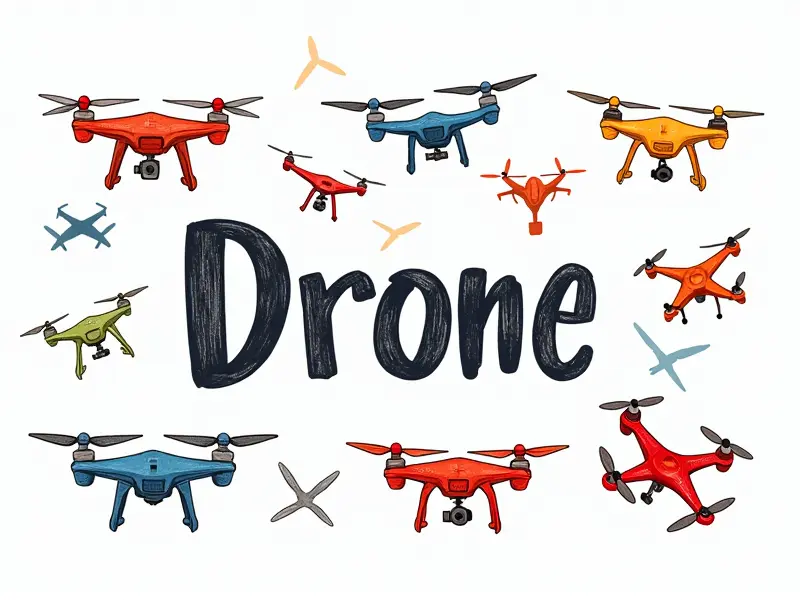Best times to fly a drone

Flying a drone can be an exhilarating experience, but it's essential to choose the right times and conditions to get the most out of your flights. Whether you're capturing stunning aerial footage or engaging in FPV racing, understanding when and where to fly is crucial for success.
Ideal Lighting for Drone Videos
The lighting conditions significantly impact the quality of drone videos and photos. Soft, natural light during the golden hour (the period just after sunrise and before sunset) provides a warm, flattering glow that enhances colors and textures. However, this doesn't mean you should avoid flying at other times; midday sunlight can also produce sharp, clear images if managed correctly.
Morning vs Evening Drone Flights
Choosing between morning and evening flights depends on your goals. Early mornings offer cooler temperatures and less wind, which is ideal for stability and longer flight durations. Conversely, evenings provide the golden hour lighting mentioned earlier, making it perfect for capturing dramatic skies and landscapes.
Morning Benefits
- Cooler temperatures
- Less wind
- Longer battery life due to lower ambient temperature
Evening Benefits
- Golden hour lighting
- Dramatic skies and sunsets
- Limited human activity, reducing interference
Best Weather Conditions for Drones
Weather plays a crucial role in drone flying. Calm conditions with little to no wind are ideal for capturing high-quality footage and ensuring stability during flights. Avoid flying in rain or strong winds as these can damage your drone or compromise flight safety.
Suitable Weather Conditions
- Clear skies
- Calm winds (below 10 mph)
- No precipitation
Avoiding No-Fly Zones in Drones
Before flying, it's crucial to check for no-fly zones. These areas include restricted airspace around airports, military bases, and other sensitive locations. Use apps like Drone Zone or B4UFLY to identify these zones and plan your flights accordingly.
No-Fly Zones
- Airports
- Military installations
- Government buildings
- Sporting events
Sunrise and Sunset Drone Moments
The moments around sunrise and sunset offer unique opportunities for stunning aerial photography. The low angle of the sun creates long shadows, enhancing depth and texture in your footage. Additionally, these times are often less crowded, allowing you to capture serene landscapes without interruptions.
Benefits of Sunrise/Sunset Flights
- Golden hour lighting
- Serene environment with minimal human activity
- Enhanced depth and texture in photos/videos
Low Traffic Times for Drone Flying
Flying during off-peak hours can significantly reduce the risk of interference from other drones or aircraft. Early mornings, late evenings, and weekdays are generally less crowded than weekends and peak daylight hours.
Off-Peak Hours
- Mornings before 8 AM
- Evensings after 6 PM
- Weekdays during business hours
Seasonal Tips for Drone Pilots
The season can greatly influence your drone flying experience. Winter offers clear skies and fewer clouds, ideal for capturing landscapes without obstructions. Summer provides longer daylight hours but may require more frequent battery recharges due to higher temperatures.
Winter
- Cold weather
- Clear skies with minimal cloud cover
- Beware of ice and snow on the ground
Summer
- Longer daylight hours
- Higher temperatures affecting battery life
- Potential for thunderstorms in late afternoon
Ideal Time Windows for Drone Flights
Selecting the right time window can maximize your drone's performance and ensure optimal conditions. Early mornings between 6 AM to 9 AM offer stable weather and minimal interference, while evenings from 5 PM to 8 PM provide golden hour lighting.
Early Morning
- Cool temperatures
- Stable wind conditions
- Prolonged battery life due to cooler air
Evening
- Sunset lighting
- Dramatic skies and landscapes
- Limited human activity for uninterrupted flights
Maximizing Battery Life During Drone Flights
Battery life is a critical factor in drone flying. To maximize it, fly during cooler times of the day as higher temperatures can reduce battery efficiency. Additionally, avoid high-speed operations and keep your drone within range to minimize signal loss.
Tips for Battery Efficiency
- Fly early morning or late evening
- Avoid direct sunlight on batteries
- Minimize high-speed maneuvers
Least Crowded Times for FPV Racing Drones
For FPV (First Person View) racing drones, finding less crowded times is essential. Early mornings and late evenings are ideal as these periods typically see fewer recreational flyers. Weekdays also offer a quieter environment compared to weekends.
Least Crowded Times
- Mornings before 8 AM
- Evensings after 6 PM
- Weekdays during business hours
Peak Hours for Uninterrupted Drone Flights
To ensure uninterrupted drone flights, plan your activities around peak hours. Early mornings and late evenings provide the least interference from other flyers and human activity, making them ideal for capturing high-quality footage or engaging in FPV racing.
Peak Hours
- Early morning (6 AM - 8 AM)
- Late evening (5 PM - 7 PM)
In conclusion, flying a drone at the right time can significantly enhance your experience and results. Whether you're capturing stunning aerial footage or engaging in FPV racing, understanding ideal lighting conditions, weather patterns, and no-fly zones is crucial for success. By following these guidelines, you'll be well-equipped to make the most of every flight.

